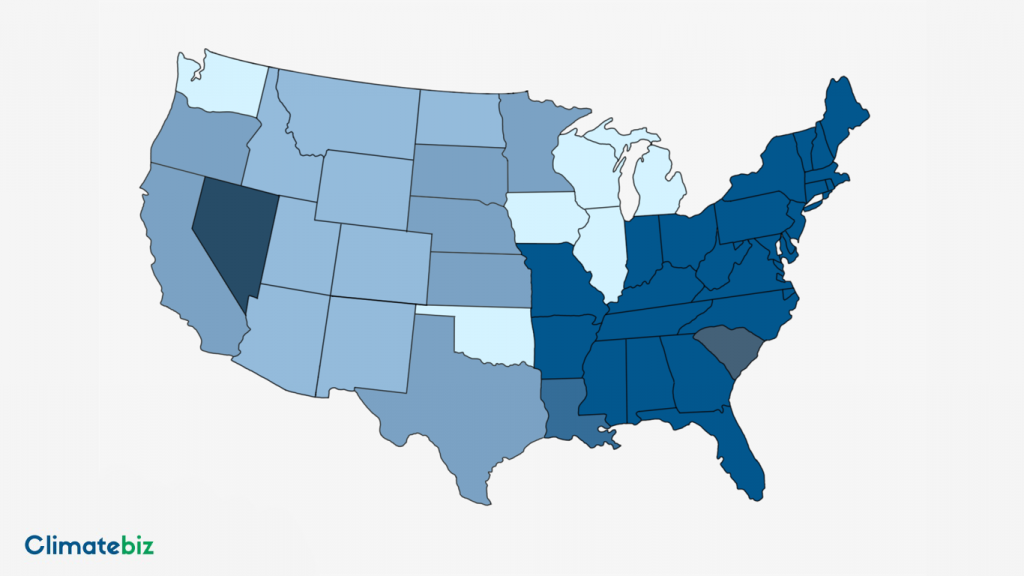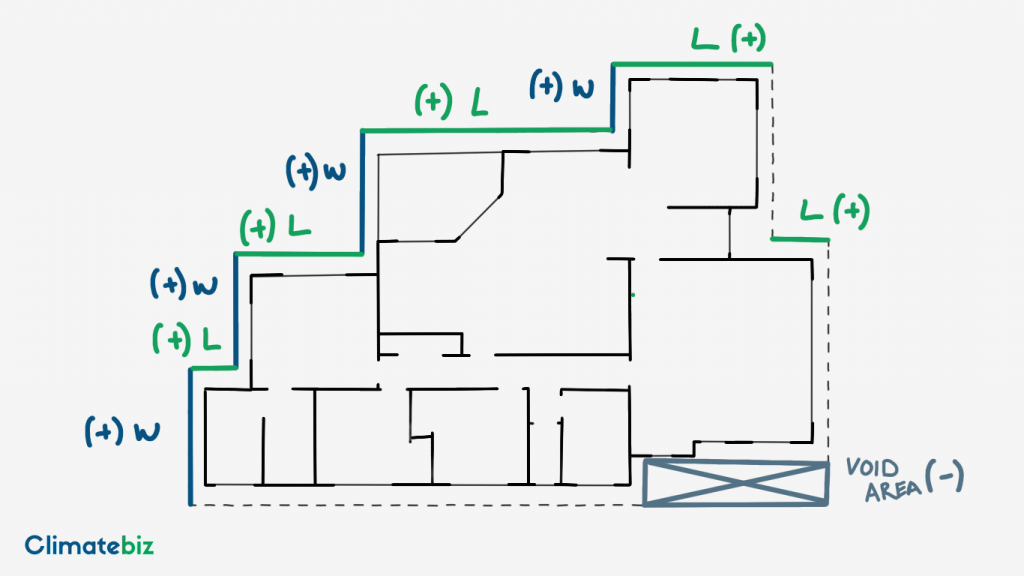The desire to collect rainwater can quickly turn into an obsession for many people out there. However, it may seem like a hassle to others, especially those unsure about its worth.
Whatever the case may be, you’d be surprised by how much rainwater you can collect!
So, how do you calculate rainwater collection?
The amount of water you can catch depends on how large your catchment area is. For example, most rainwater systems collect rain from your home’s roof. However, you can also collect rainwater off impermeability surfaces, like your driveway or pavement.
By now, you’ll notice that some calculations are in order. But don’t worry, it’s not rocket science!
This article will look at the math you’ll need to calculate how much rainwater you can collect. We will also guide you through the process with easy-to-follow examples.
Get a pen and paper out — let’s get started!
Table of Contents
How Do You Calculate Rainwater Collection?
The average American home can collect around 40,140 gallons of water a year – that’s almost an Olympic swimming pool! For you, this amount will depend on the average rainfall in your area and the size of your home.
Before we look at these different factors, let’s look at the equation we’ll use for the calculations.
Roof area (sq.ft) x inches of rainfall x 0.623 = collected water
You may be wondering why we’ve included a factor of 0.623. Since the roof area is square feet and you measure rainfall in inches, you’ll need to multiply it by 0.623.
Additionally, we’ll assume that the system has an 0.8 yield — meaning that you’d only catch 80% of actual rainwater.
(rainwater collected) x (yield) = actual collection
As you can see from the above equation, some factors are specific to your home and location. These are the area of your roof and the inches of rainfall in your climate.
In the USA, the average house size is 2,598 sq. ft, and the average rainfall is 31″ annually.
How To Find The Average Rainfall In Your State

Nowadays, you no longer need a rain gauge to measure the amount of rainfall in your area. While a rain gauge might be more accurate, a quick google search can give you the information you need.
According to the National Centers for Environmental Information, the average rainfall in 2010 was 31 inches annually.
If you’re looking for a more specific data set, you can refer to this table:
| State | Average Rainfall (in inches) |
|---|---|
| Alabama | 56″ |
| Alaska | 31″ |
| Arizona | 22″ |
| Arkansas | 50″ |
| California | 22″ |
| Colorado | 17″ |
| Connecticut | 50″ |
| Delaware | 45″ |
| Florida | 50″ |
| Georgia | 48″ |
| Hawaii | 49″ |
| Idaho | 18″ |
| Illinois | 41″ |
| Indiana | 42″ |
| Iowa | 32″ |
| Kansas | 33″ |
| Kentucky | 47″ |
| Louisiana | 60″ |
| Maine | 40″ |
| Maryland | 44″ |
| Massachusetts | 43″ |
| Michigan | 34″ |
| Minnesota | 32″ |
| Mississippi | 57″ |
| Missouri | 41″ |
| Montana | 15″ |
| Nebraska | 27″ |
| Nevada | 10″ |
| New Hampshire | 46″ |
| New Jersey | 45″ |
| New Mexico | 13″ |
| New York | 37″ |
| North Carolina | 48″ |
| North Dakota | 17″ |
| Ohio | 40″ |
| Oklahoma | 36″ |
| Oregon | 75″ |
| Pennsylvania | 43″ |
| Rhode Island | 44″ |
| South Carolina | 48″ |
| South Dakota | 23″ |
| Tennessee | 52″ |
| Texas | 27″ |
| Utah | 17″ |
| Vermont | 43″ |
| Virginia | 44″ |
| Washington | 73″ |
| West Virginia | 45″ |
| Wisconsin | 34″ |
| Wyoming | 11″ |
| AVERAGE | 38″ |
The table shows the annual averages for rainfall in the state. However, some parts of the state will receive more rain than others. Therefore, you can use this website to find out the average rainfall in your city.
It’s also important to note that these are annual averages. Every climate has rainy and dry months; you’ll collect more rain in wet seasons.
How To Calculate The Area Of Your Roof
According to CNN, the average size of an American home has grown by 150% since 1980. Today, the average area of a home is 2,598 square feet.
You can use this average to calculate how much rainwater you can collect. However, for accurate estimation, you should calculate the area of your home.
This equation is simple – all you have to do is multiply the length of your home by its width.
Length x width = square footage
The tricky part is when your home is irregular. To help you out, we’ve created an example of the calculation below:

L x W = Sq
You’ll need to measure all your walls on the exterior side. Then, add all the ‘widths’ up and the ‘lengths’ up. Be sure not to add any doubles and remove negative spaces like gullies or service shafts.
How Much Rainwater Can I Collect From My Roof?
Next, we’ll walk you through calculating how much rainwater you can collect. The best way to do this is by showing you some examples which you can use as base calculations.
We have three examples, an average home from Carson City, Sacramento, and Salem.
Carson City
In Carson City, the wettest month tends to be February, with an average rainfall of 1.57 inches. Additionally, the annual average is 11.8 inches. So we’ll use these two valves in our calculations.
First, let’s calculate how much rain a 2,598 sq. ft. home can catch annually.
2,598 x 11.8 x 0.623 = 19,099 gallons
Additionally, we can calculate a yield of 0.8:
0.8 x 19,099 = 15,279 gallons
Therefore, you can expect to collect 15,279 gallons of water per year.
Next, let’s see how much water you can collect in February alone, excluding snow.
2,598 x 1.57 x 0.623 = 2,541 gallons
With a 0.8 yield:
0.8 x 19,099 = 2,033 gallons
Therefore, you can expect to collect 2,033 gallons in February. That’s enough water to flush a dual-flush toilet 635 times or water a 32 sq. ft. garden 100 times.
Sacramento
Sacramento tends to have an average annual rainfall of 16 inches. Its wettest month is January, with 3.64 inches of rain.
Annually, a 2,598 sq. ft. home can catch 20,718 gallons of rainwater.
2,598 x 16 x 0.623 = 25,898 gallons
With an 80% yield:
0.8 x 25,898 = 20,718 gallons
In addition, an average home in Sacramento will collect 4,713 gallons of rainwater in January.
(2,598 x 3.64 x 0.623) x 0.8 = 4,713 gallons
According to Harvard, that’s enough water to shower for 31 hours.
Salem
Oregon is one of the wettest states in America, with Salem having an average of 44.9 inches of rain per year. In addition, there is an average of around 6.86 inches of rain over December.
Annually, a 2,598 sq. ft. home can catch 20,718 gallons of rainwater.
2,598 x 44.9 x 0.623 = 72,673 gallons
With a 0.8 yield:
0.8 x 72,673 = 58,138 gallons
In addition, an average home in Salem will collect 4,713 gallons of rainwater in December.
(2,598 x 6.86 x 0.623) x 0.8 = 8,883 gallons
With 8,883 gallons of water, you could run your dishwasher 95 times. Additionally, according to the EPA, you could garden with 8,883 gallons of rainwater for three months.
Final Thoughts
How much rainwater you can collect depends on the size of your home. Additionally, it’ll depend on how many gutters your system connects to.
It also depends on the rainfall, season, and whether or not you’re experiencing a drought.
Either way, according to our calculations, it’s definitely worth it! You could either use the rainwater right away or store it for later us.
Having proper storage will allow you to collect a lot of water during the wet months. Then, you’ll be able to use that stored rainwater during dry months.
With the possibility of collecting 19,099 gallons of water a year, building a rainwater system is worth it.

